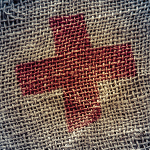I had the opportunity to spend a day with Dr. Jones a few months before his untimely death. It was a marvelous learning experience. The problem that he confronted in the 1940s was a total lack of uniformity in how to diagnose ARF in clinical and epidemiologic studies. To obviate this deficiency, he proposed the Jones Criteria, which have since been universally accepted, with minor modifications. The five major criteria were used to restrict the number of patients to those who were unequivocal cases of ARF. In fact, two of the major criteria, erythema marginatum and Sydenham’s chorea, were each pathognomonic of ARF without any other evidence being considered. So, to demand the presence of two major criteria to make the diagnosis in a study group was to assure uniformity. However, the criteria were not designed for use by the practicing physician, but for strict research purposes only.
An Unmatched Experience for a Young Rheumatologist
The Streptococcal Disease Laboratory was a unique research experience. It was basically a medical military operation devised by the Department of Defense for one purpose: to eliminate the streptococcus as a significant health problem in the military. Once this was done, the lab ceased to have a purpose and it was ultimately disbanded. It is to the credit of the energetic young physicians on the staff that they utilized their time and the facility to the maximum and were able to study the group A streptococcus in more complete detail than anyone demanded. The information obtained was impressive and was largely responsible for the group’s receipt of the Lasker Award. Each member of the Strep Lab staff went on to impressive academic careers: professorships, deanships, and even one director of the NIH. What a group!
Dr. Morris’ medical career spanned seven decades. He was a founding fellow of the ARA (predecessor to the ACR) and served as faculty at several medical schools, but his true love was providing the best care he could for his patients. He spent the last quarter century of his medical career in private practice in Kingsport, Tenn.
Note: My father, Dr. Alton Morris, passed away this July after a lifetime of work in rheumatology. As a founding fellow of the American Rheumatology Association (ARA), my dad said he remembered a time when the organization was so small you could hold the meeting in the lobby of the New Orleans Fairmont Hotel. He was always modest about his experiences with the Strep Lab and his collaborators; while the work they did provided great insight into a major epidemiologic problem, they were content with the knowledge that they had made a difference in the lives of thousands, if not millions, of patients.

